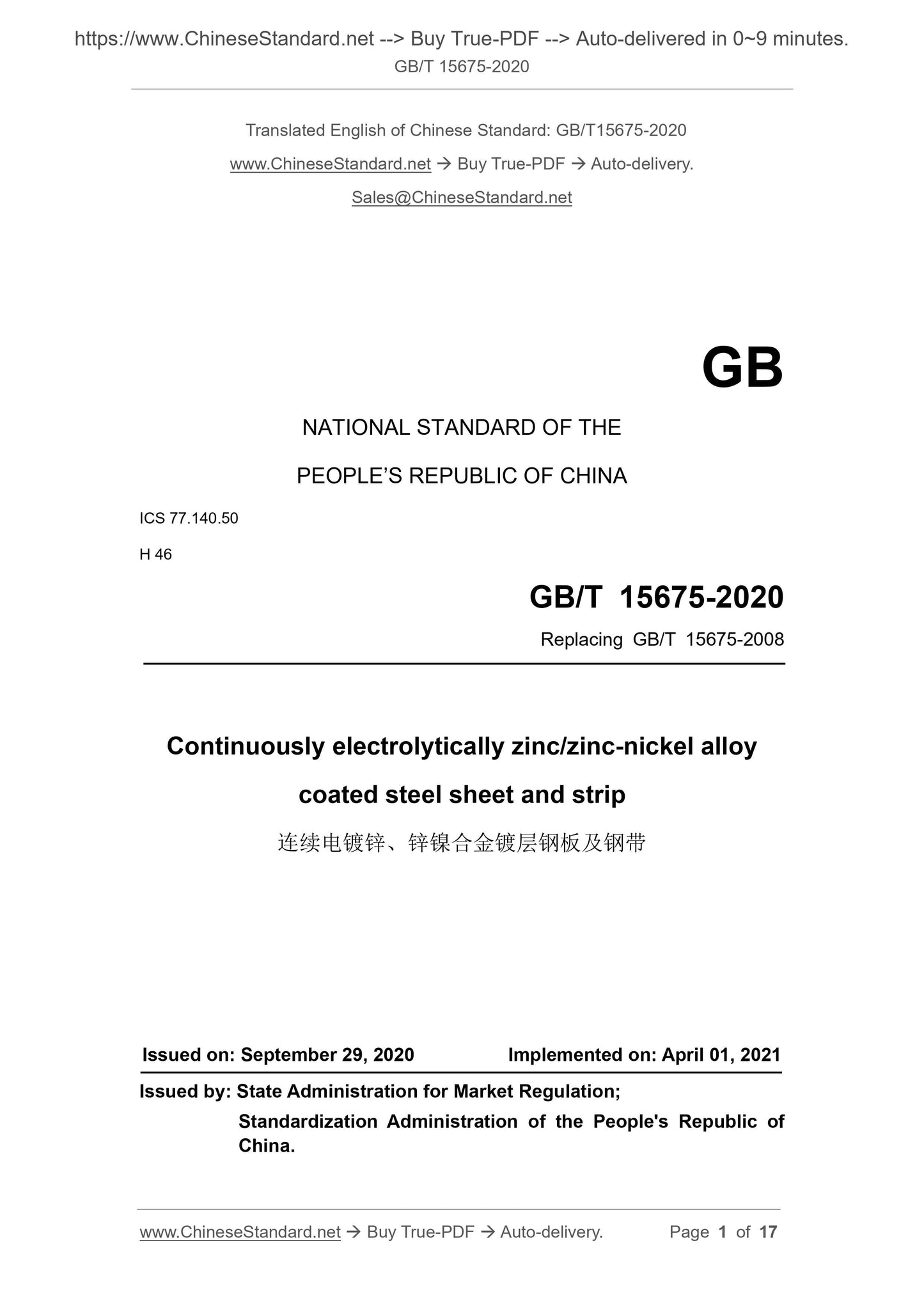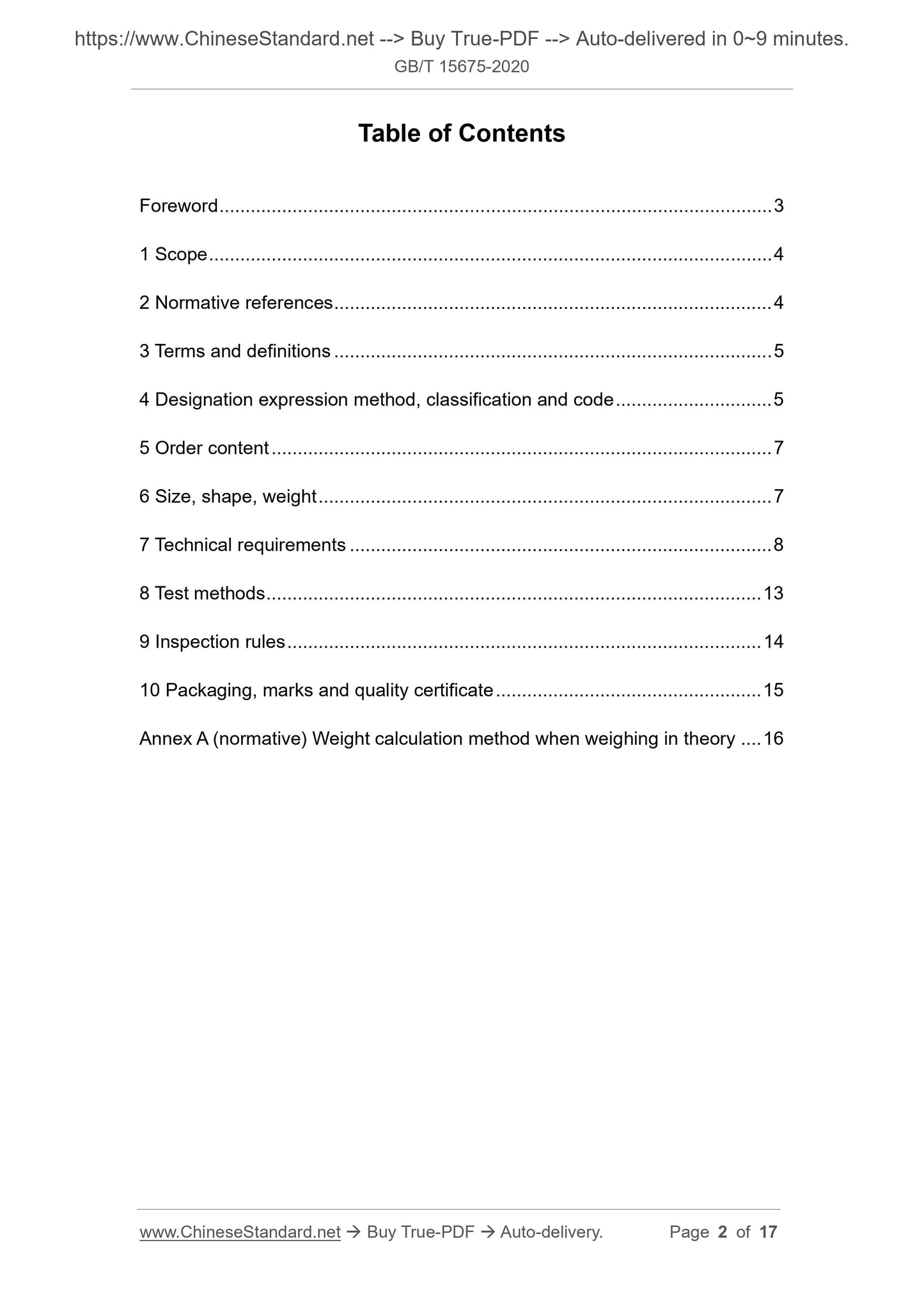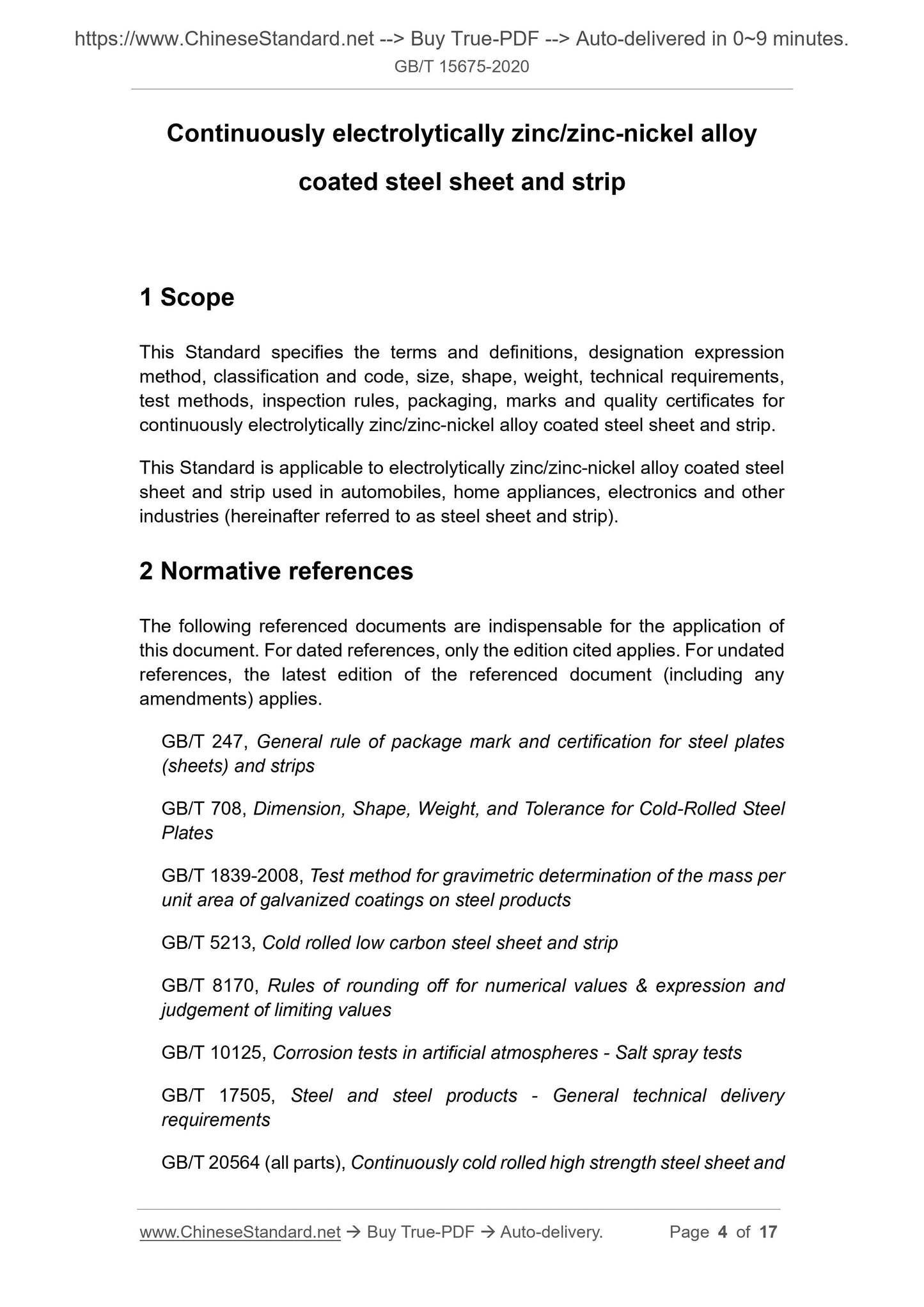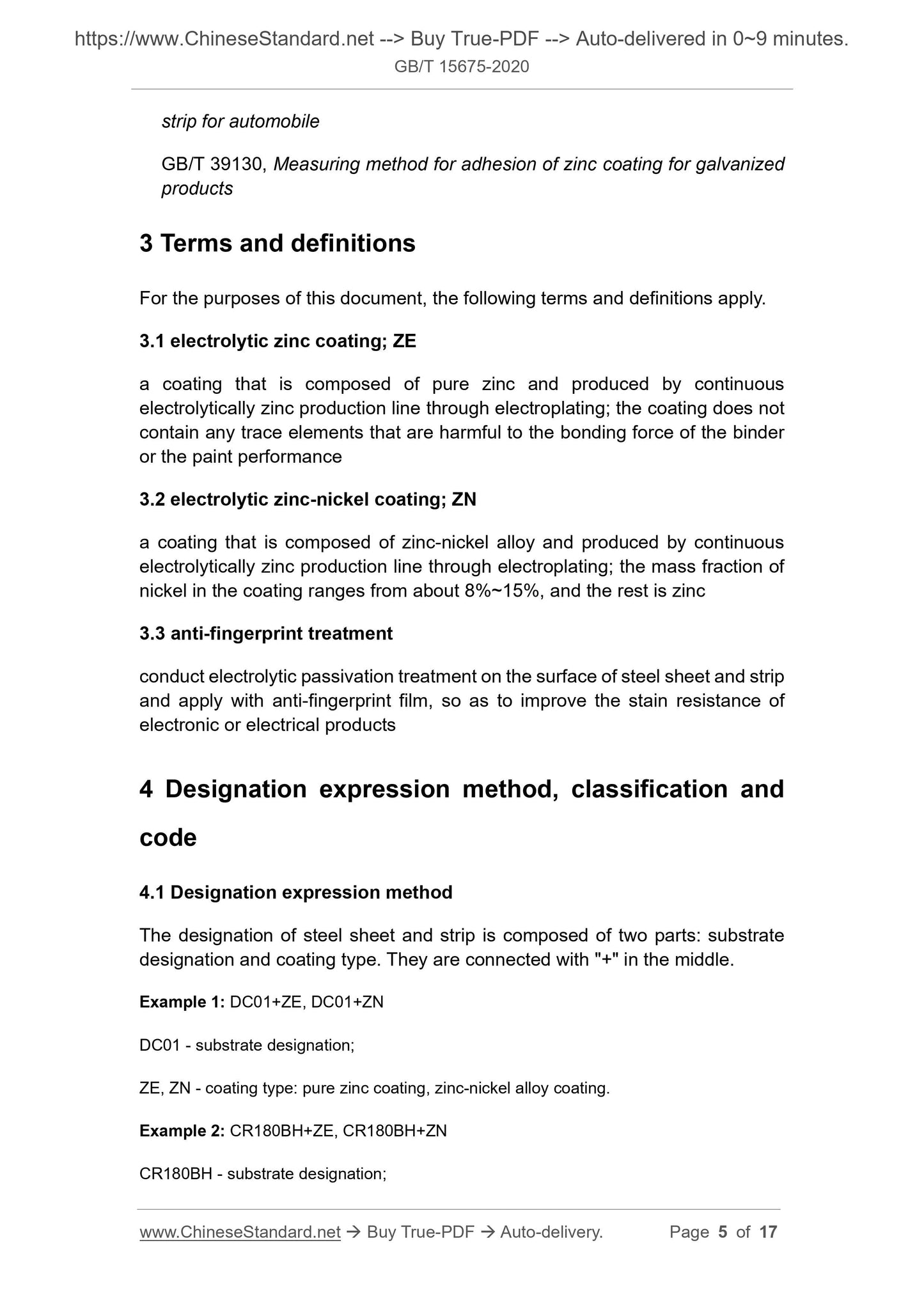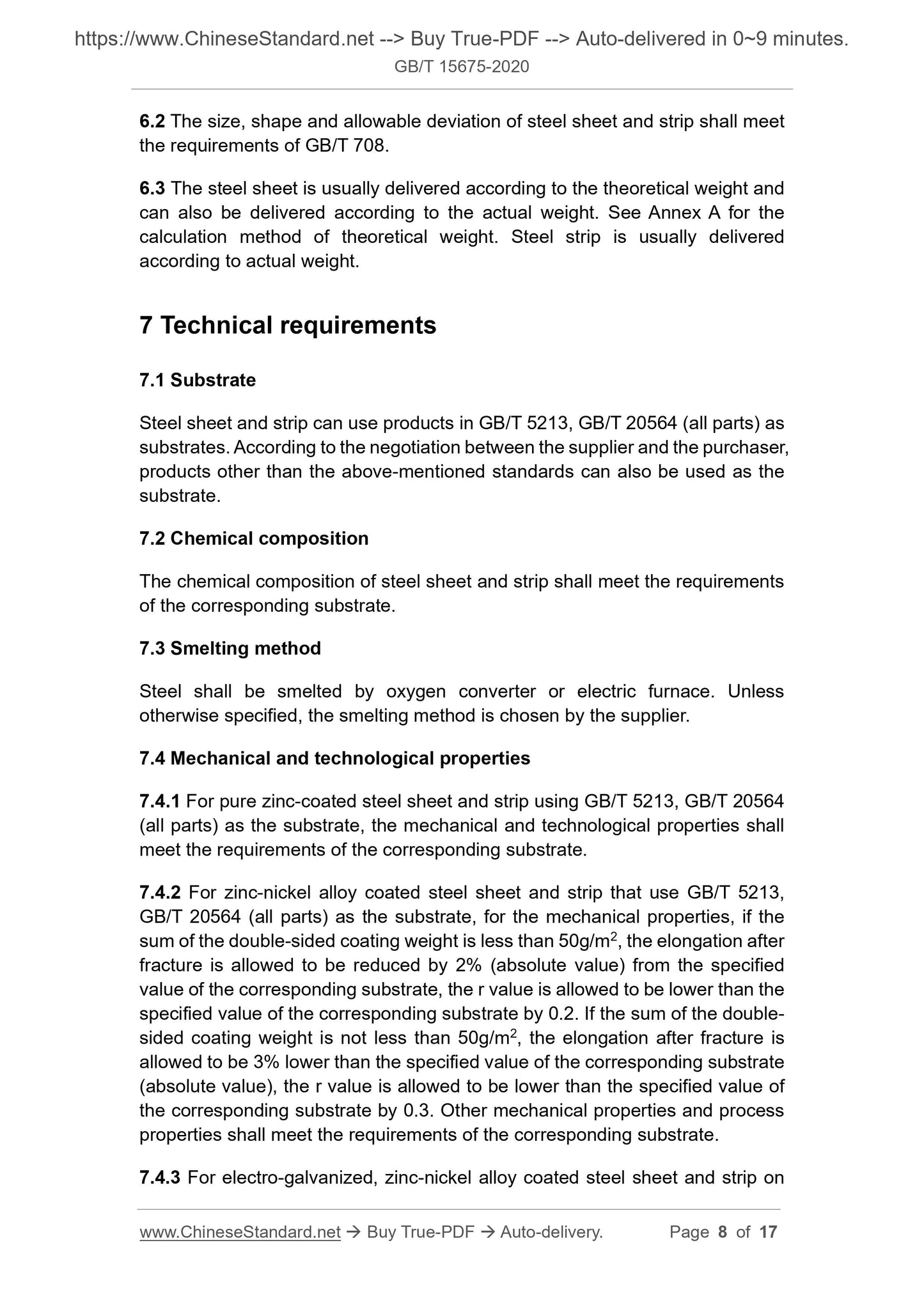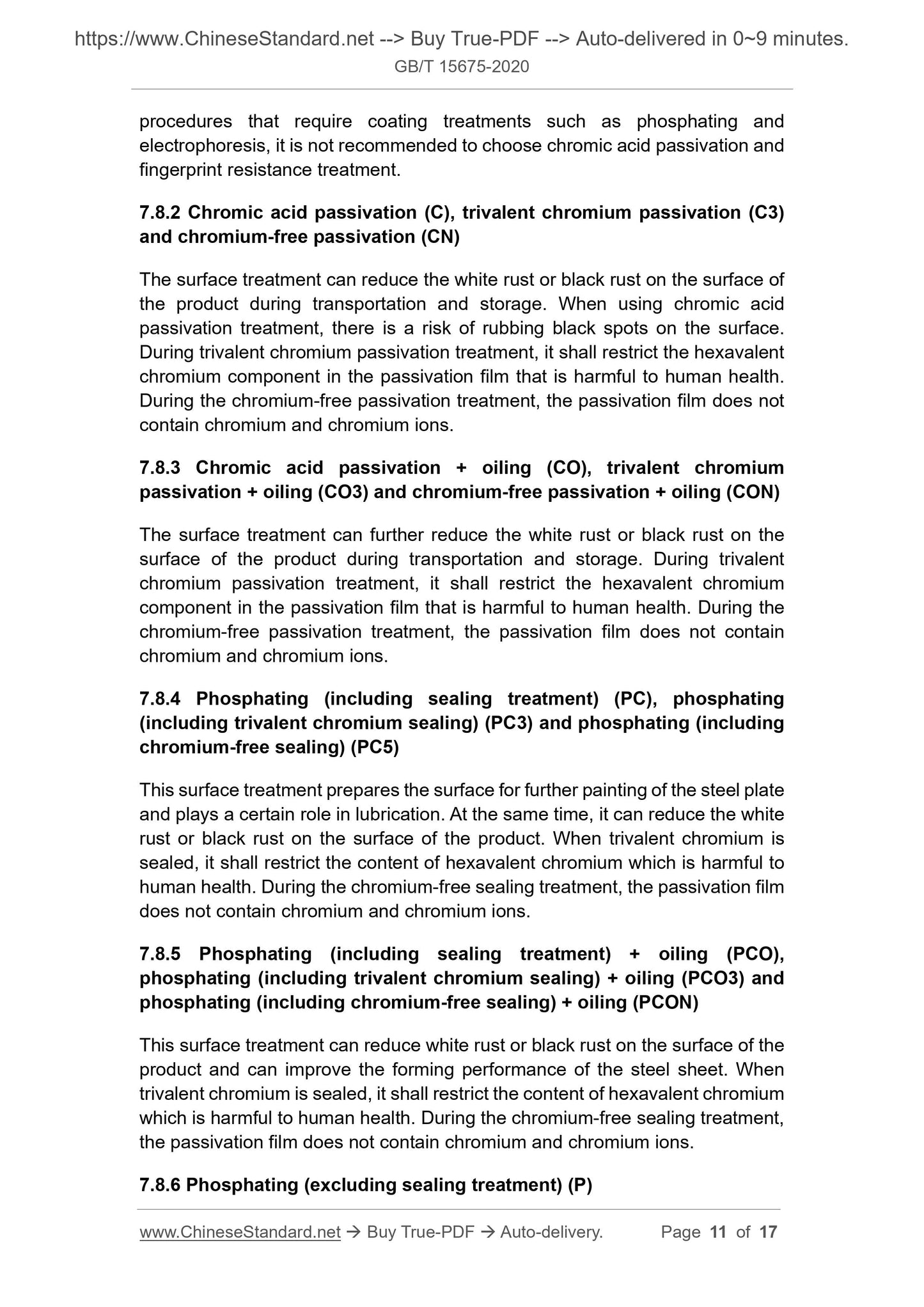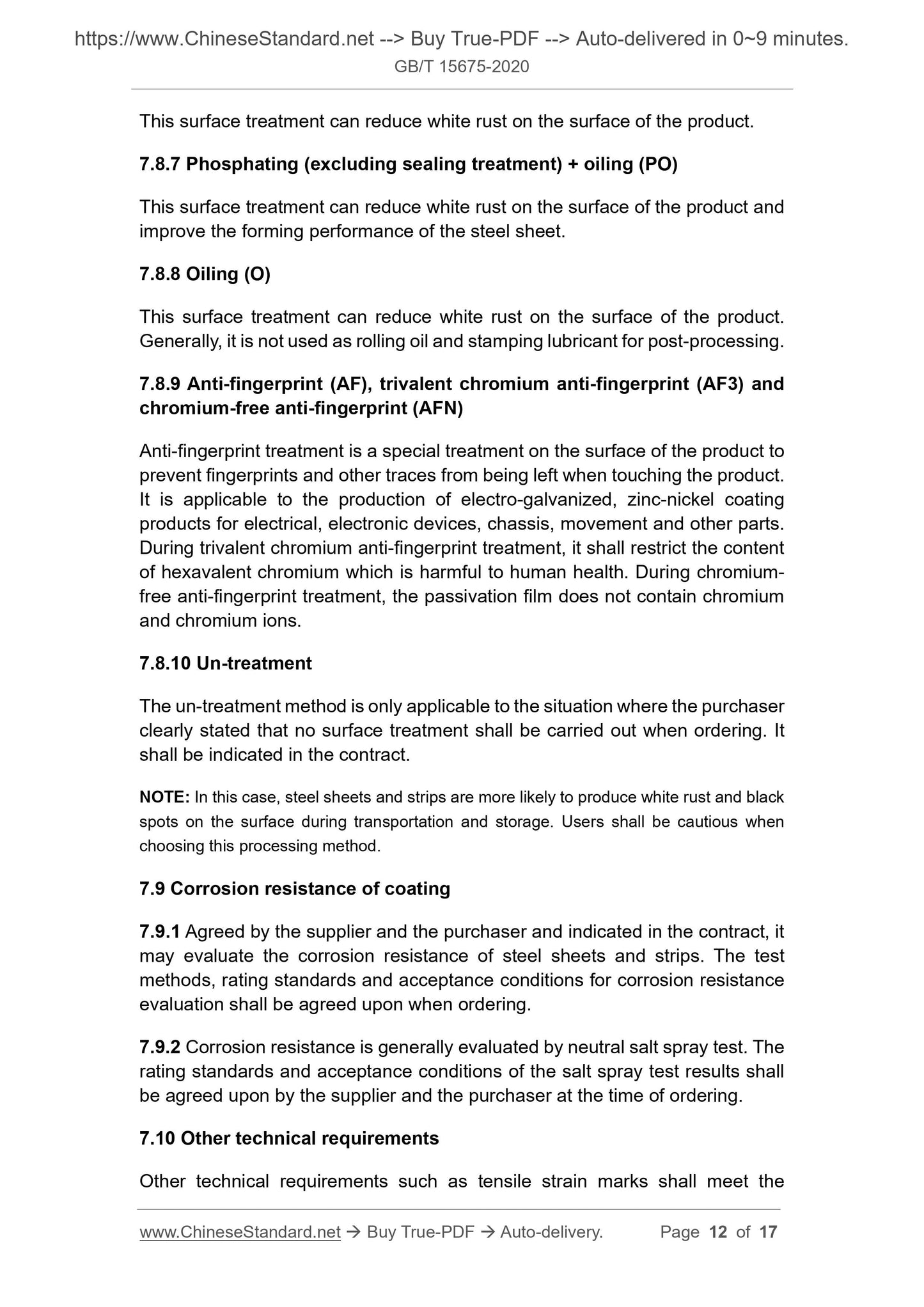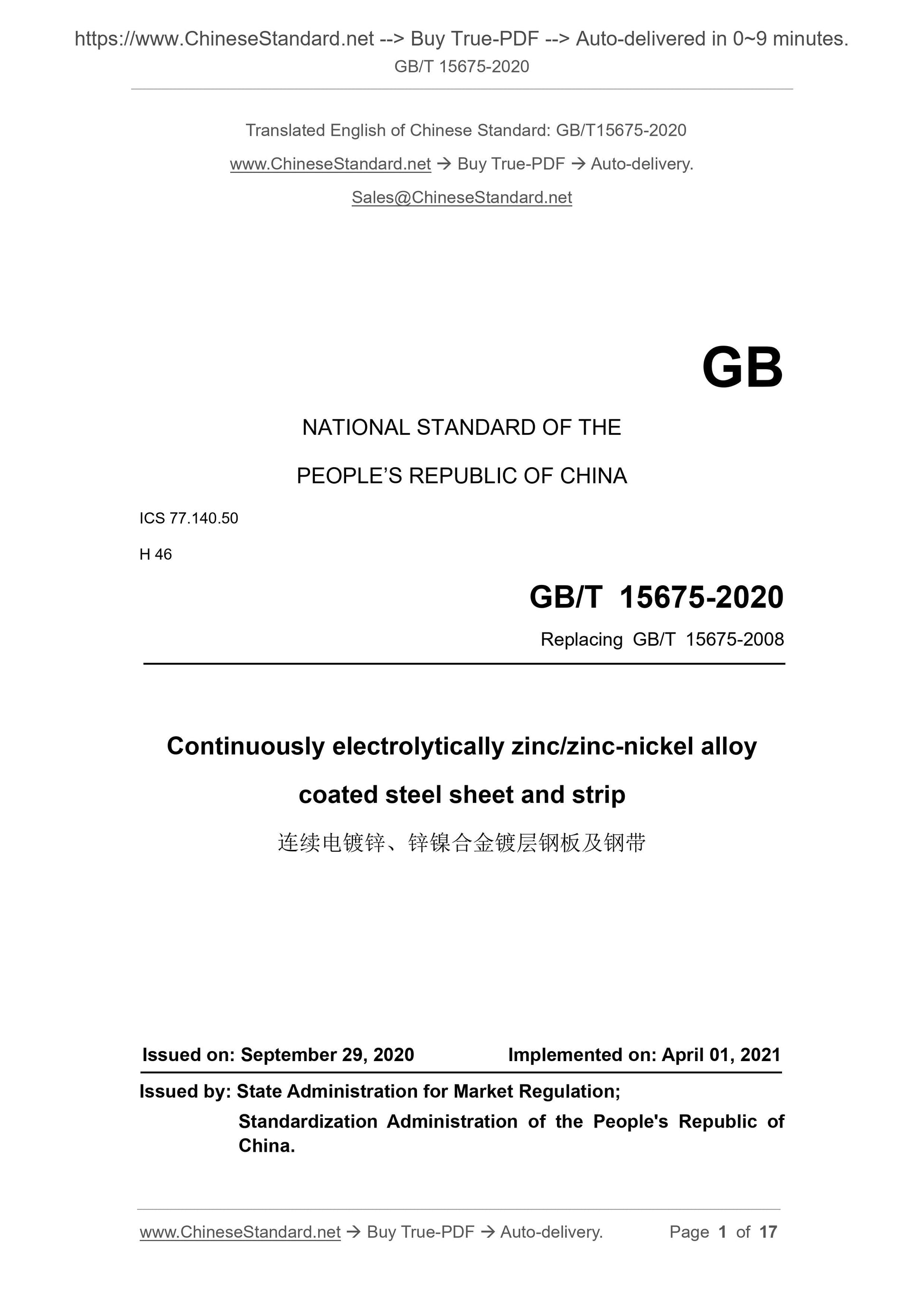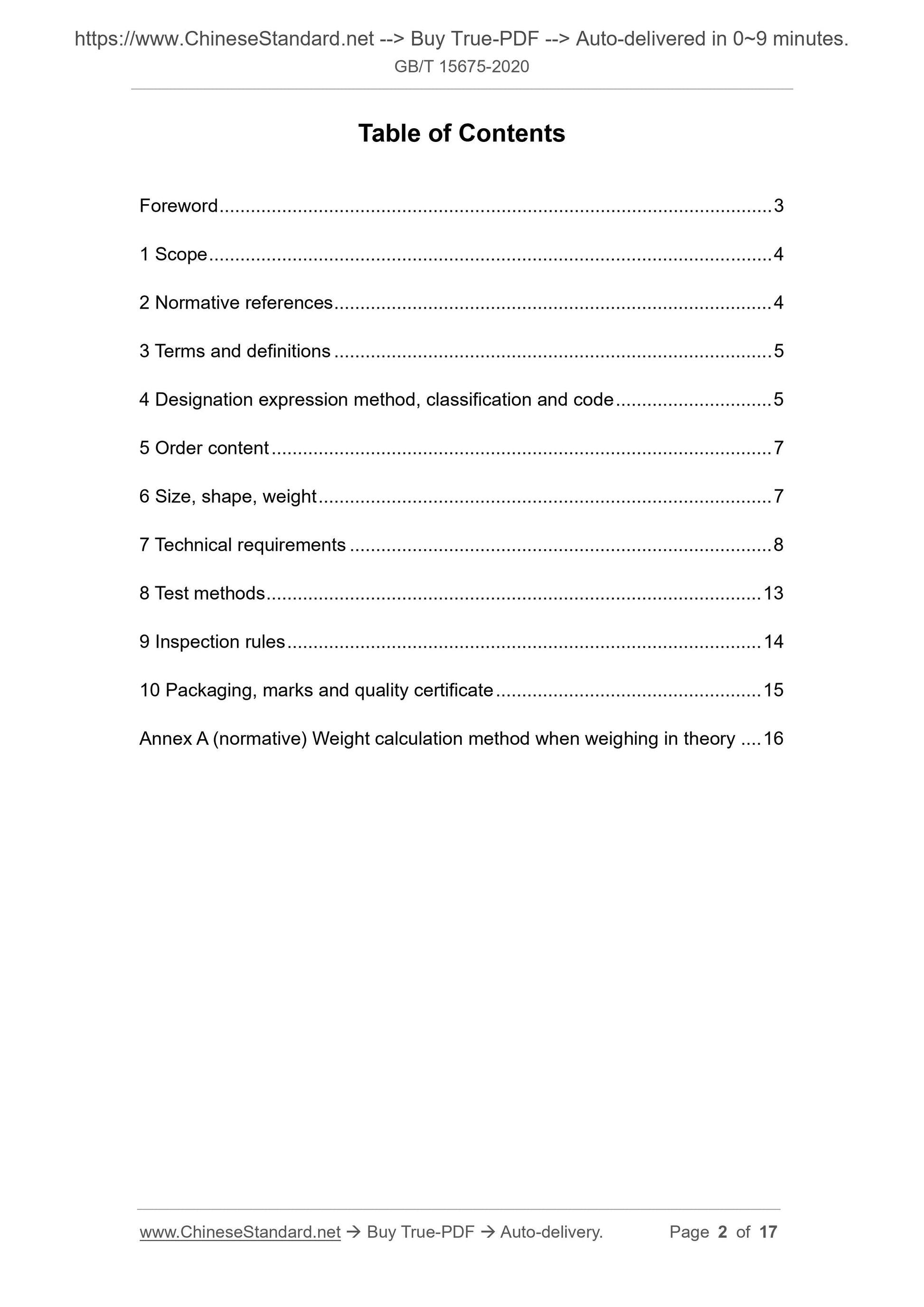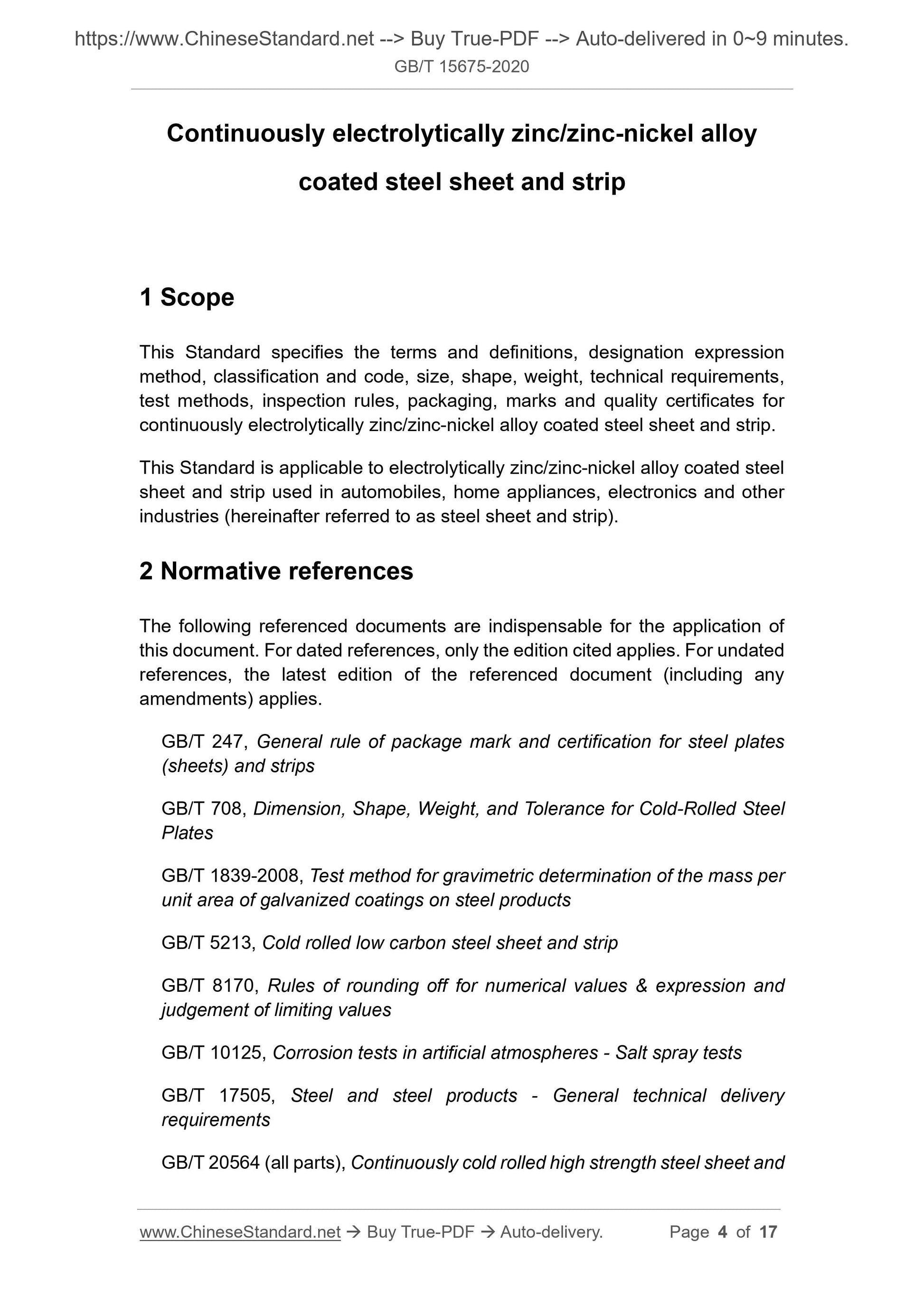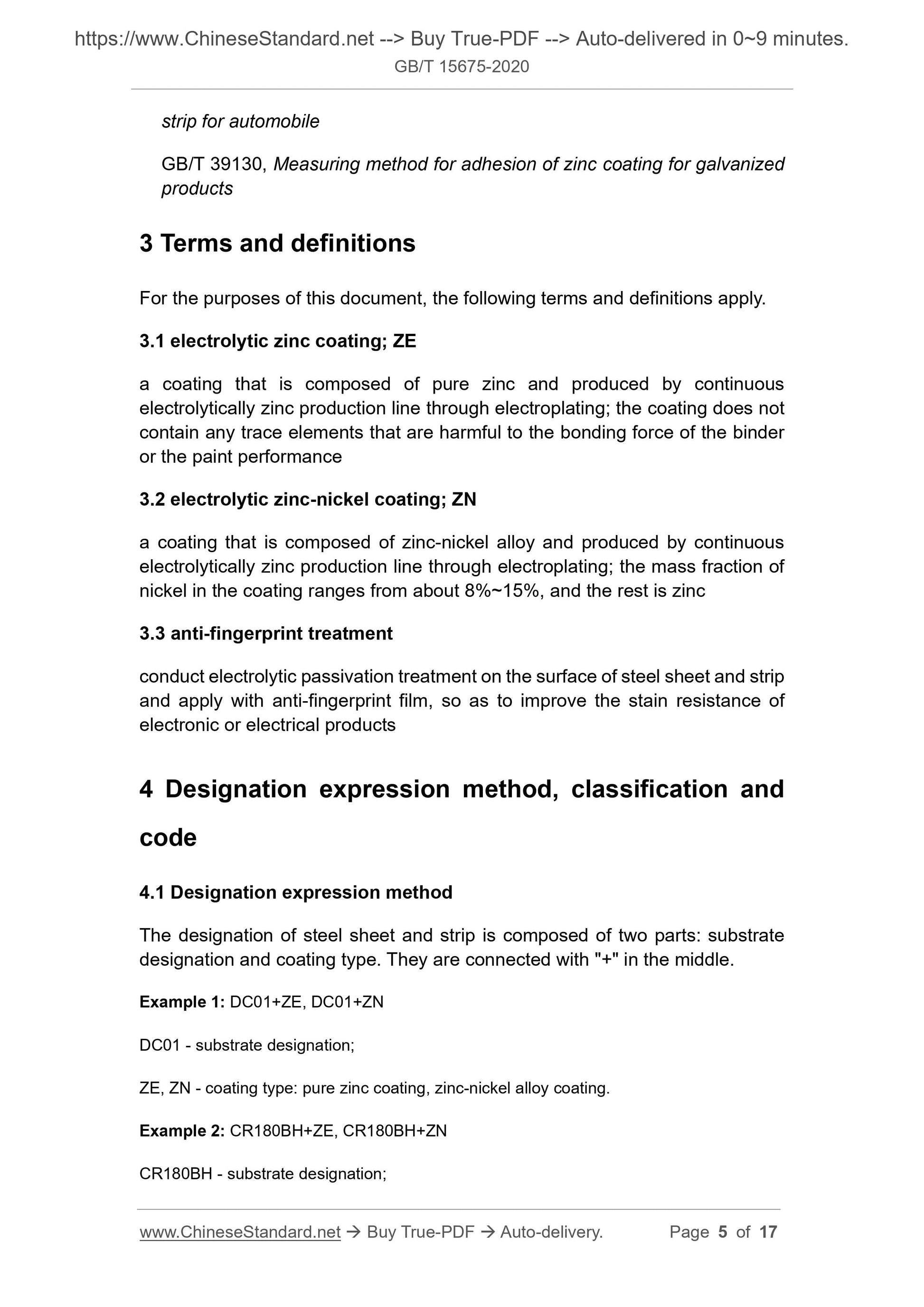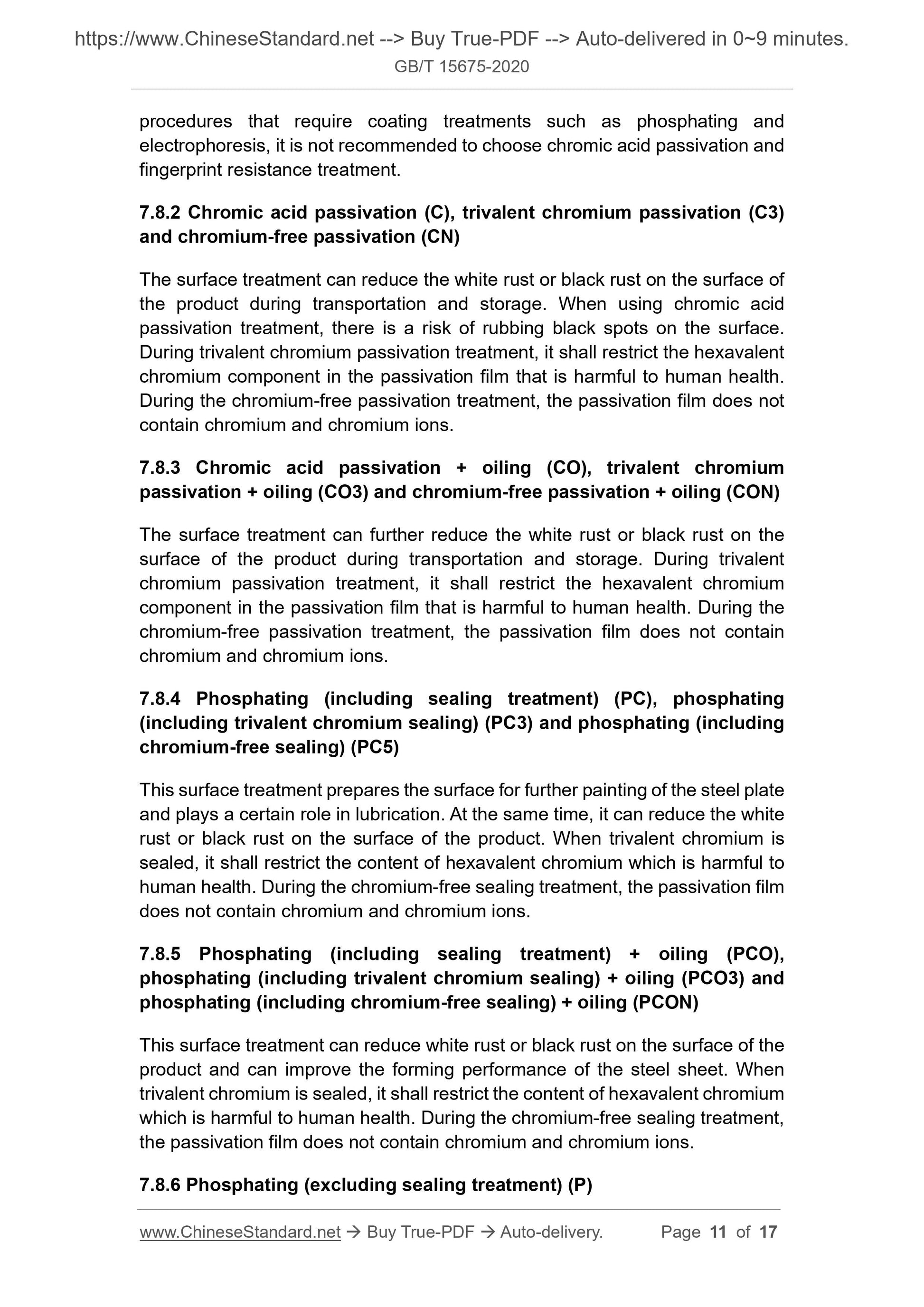1
/
of
7
www.ChineseStandard.us -- Field Test Asia Pte. Ltd.
GB/T 15675-2020 English PDF (GB/T15675-2020)
GB/T 15675-2020 English PDF (GB/T15675-2020)
Regular price
$185.00
Regular price
Sale price
$185.00
Unit price
/
per
Shipping calculated at checkout.
Couldn't load pickup availability
GB/T 15675-2020: Continuously electrolytically zinc/zinc-nickel alloy coated steel sheet and strip
Delivery: 9 seconds. Download (and Email) true-PDF + Invoice.Get Quotation: Click GB/T 15675-2020 (Self-service in 1-minute)
Newer / historical versions: GB/T 15675-2020
Preview True-PDF
Scope
This Standard specifies the terms and definitions, designation expressionmethod, classification and code, size, shape, weight, technical requirements,
test methods, inspection rules, packaging, marks and quality certificates for
continuously electrolytically zinc/zinc-nickel alloy coated steel sheet and strip.
This Standard is applicable to electrolytically zinc/zinc-nickel alloy coated steel
sheet and strip used in automobiles, home appliances, electronics and other
industries (hereinafter referred to as steel sheet and strip).
Basic Data
| Standard ID | GB/T 15675-2020 (GB/T15675-2020) |
| Description (Translated English) | Continuously electrolytically zinc/zinc-nickel alloy coated steel sheet and strip |
| Sector / Industry | National Standard (Recommended) |
| Classification of Chinese Standard | H46 |
| Classification of International Standard | 77.140.50 |
| Word Count Estimation | 11,115 |
| Date of Issue | 2020-09-29 |
| Date of Implementation | 2021-04-01 |
| Older Standard (superseded by this standard) | GB/T 15675-2008 |
| Regulation (derived from) | National Standard Announcement No. 20 of 2020 |
| Issuing agency(ies) | State Administration for Market Regulation, China National Standardization Administration |
Share
